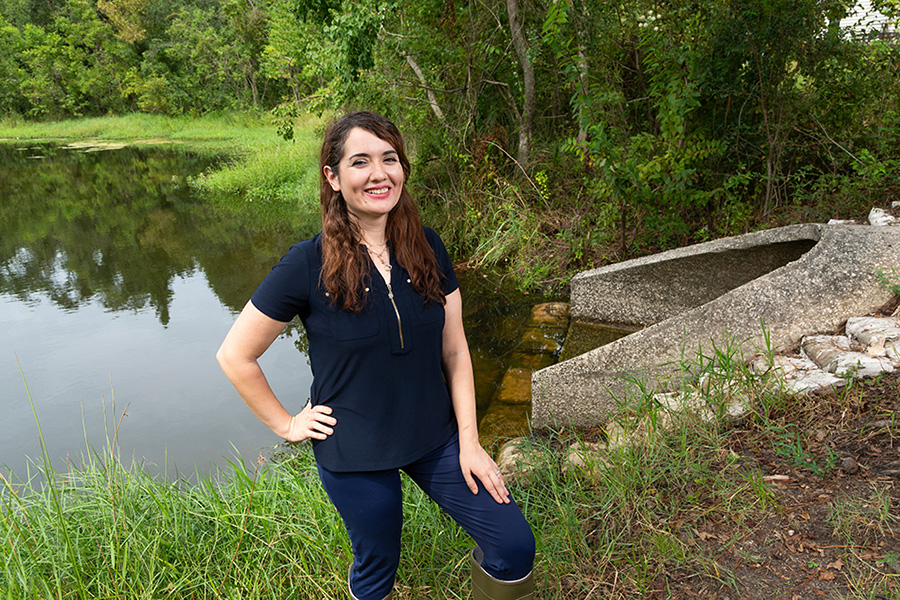
Microplastic pollution is a significant environmental problem that harms animals and people and affects ecosystems worldwide. These tiny pieces of plastic, smaller than five millimeters, are pushed by wind and water to move around the globe.
Nasrin Alamdari, an assistant professor in the FAMU-FSU College of Engineering’s Department of Civil and Environmental Engineering, is on a mission to learn more about microplastics and how they move.
In research published in Environmental Pollution, she helped examine how shape, size and density affect the speed at which microplastic particles sink, which affects how widely they are dispersed by stormwater.
“Not all microplastics move through water in the same way,” Alamdari said. “We need to know more about environmental degradation of microplastics and how they are transported in urban stormwater. This research helps us predict the paths different particles will take, which gives engineers a better understanding of how to capture this pollution.”
The researchers examined how microplastics move from cities into our water systems when it rains. They used modeling to understand how these tiny plastics are transported in urban areas and how their tendency to sink or float affected their travel path.
The study found that the shape of microplastics — like fibers, sheets, and small bits — plays a big role in how fast they sink, especially as they get larger. Smaller plastics tend to float along with the water, while larger ones are affected by their shape, size, and the water flow conditions.
More than 80% of the plastic introduced into the marine environment comes from inland sources, fueling a big push to find long-term solutions for this growing problem. Hard surfaces in cities make it easy for microplastics to be washed into rivers and lakes, which is bad for organisms and can also affect human health.
“Urban areas, with their impervious surfaces, facilitate the rapid transportation of these microplastics into nearby water bodies, leading to contamination of aquatic ecosystems and potential risks to public health,” Alamdari explained.
Everything from residential, industrial and commercial entities to roads and highways contributes to microplastic pollution released in urban stormwater runoff. Even wind can transport light and tiny microplastics. By studying the material’s density, shape and size, scientists can model how these microplastics travel through the environment, informing strategies to integrate infrastructure into traditional stormwater management practices.
“Permeable pavements, rain gardens and vegetated swales could be strategically deployed to reduce the transport of microplastics by enhancing filtration, trapping these particles before they reach storm drains,” Alamdari said. “The slope of the land and the roughness of surfaces can affect how microplastics move. Knowing this, city planners can design better green spaces and stormwater systems to trap microplastics.”
Co-authors on this study were from the University of Missouri, the Missouri Water Center and Imam Khomeini International University in Iran. Arghavan Beheshtimaal, from the University of Missouri, is the paper’s main author. This research was supported by the National Science Foundation.
For more about the FAMU-FSU College of Engineering, visit eng.famu.fsu.edu.



